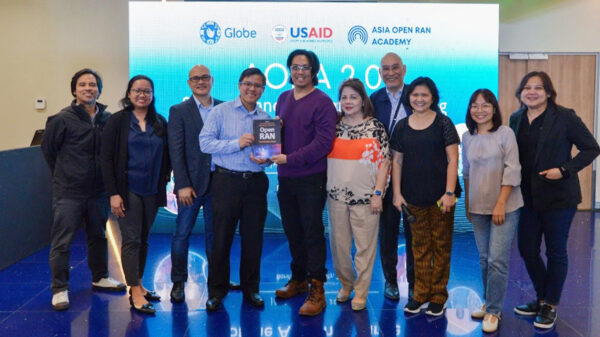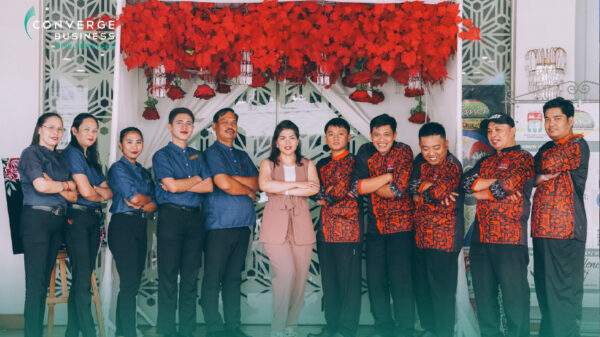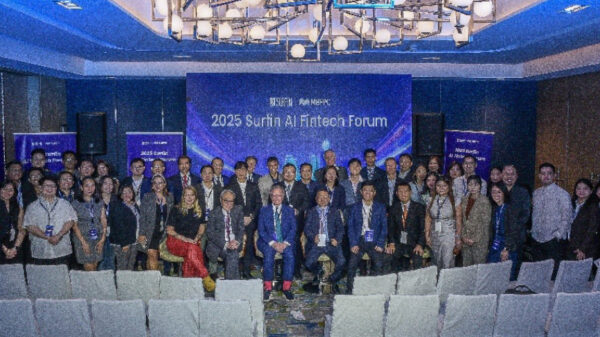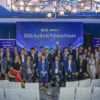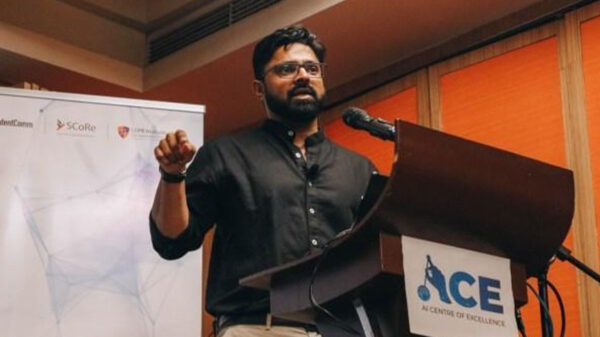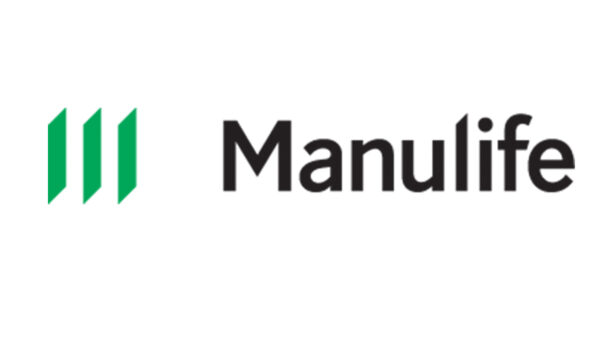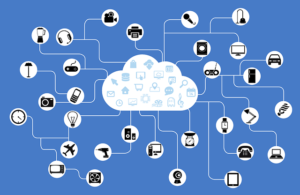 The adoption of Internet of Things (commonly referred to as IoT) platforms will dominate enterprise IT strategies in 2018, alongside a number of other areas, according to the chief technology officers of Hitachi Vantara, a wholly owned subsidiary of Hitachi, Ltd.
The adoption of Internet of Things (commonly referred to as IoT) platforms will dominate enterprise IT strategies in 2018, alongside a number of other areas, according to the chief technology officers of Hitachi Vantara, a wholly owned subsidiary of Hitachi, Ltd.
Hubert Yoshida, CTO, and Russell Skingsley, CTO for Asia Pacific, have identified ten key trends for the Asia Pacific technology market in 2018.
#1: IT will adopt IoT platforms to facilitate the application of IoT solutions
IoT solutions deliver valuable insight to support digital transformation and are rapidly becoming a strategic imperative in almost every industry and market sector. IT must work closely with the operations side of the business to focus on specific business needs and define the scope of an IoT project.
“Building IoT solutions that provide real value can be difficult without the right underlying architecture and a deep understanding of the business to properly simulate and digitalize operational entities and processes. This is where the choice of an IoT platform and the choice of an experienced service provider is important,” according to Yoshida.
“Enterprises should look for an IoT platform that offers an open, flexible architecture that simplifies integration with complimentary technologies and provides an extensible “foundry” on which to build a variety of industry applications that companies need to design, build, test, and deploy quickly and with minimal hassle,” added Skingsley.
#2: Object storage gets smart
Enterprises started their digital transformation this year but the first problem that they ran into was the ability to access their data. Data is often locked in isolated islands that make it costly to extract and use. These islands were built for purpose and not to be shared, and many contain data that is duplicated, obsolete or no longer used because of changes in business process or ownership.
“Data scientists tell us that 80% of the work involved in gaining analytical insight from data is the tedious work of acquiring and preparing the data. The concept of a data lake is alluring, but you can’t just pour your data into one system, unless that data is properly cleansed, formatted and indexed or tagged with metadata so that the data lake is content aware. Otherwise you end up with a data swamp,” commented Skingsley.
While object storage can store massive amounts of unstructured data and provide metadata management and search capability, the ability to be context-aware is missing. Object storage now has the ability to be “smart” with software that can search for and read content in multiple structured and unstructured data silos and analyze it for cleansing, formatting and indexing.
“Hitachi Content Intelligence can extract data from the silos and pump it into workflows to process it in various ways. Users of Content Intelligence can be authorized so that sensitive content is only viewed by relevant people and document security controls are not breached. Content Intelligence can create a standard and consistent enterprise search process across the entire IT environment. It can connect to and aggregate multi-structured data across heterogeneous data silos and different locations and provides automated extraction, classification, enrichment and categorization of all of an organization’s data,” said Skingsley.
#3: Analytics and artificial intelligence
2018 will see a growth in analytics and artificial intelligence (AI) across the board as companies see real returns on their investments. According to IDC, revenue growth from information-based products will double the rest of the product and services portfolio for a third of Fortune 500 companies by the end of 2017.
“AI became mainstream with consumer products like Amazon Alexa and Apple Siri, and Hitachi believes that it is the collaboration of AI and humans that will bring real benefits to society. Through tools like Pentaho Data Integration, our aim is to democratize the data engineering and data science process to make Machine Intelligence – a combination of Machine Learning and AI – more accessible to a wider variety of developers and engineers,” said Skingsley.
Pentaho’s machine learning orchestration, with integrations for languages like R and Python and for machine learning technologies like Spark MLlib, are steps in that direction. Lumada, Hitachi’s IoT platform, enables scalable IoT machine learning with flexible input and outputs, standardizes connections that can automatically configure and manage resources, and is compatible with Python, R and Java for machine learning.
#4: Wider adoption of video analytics
Video content analytics will be a “third eye” for greater insight, productivity and efficiency in a number of domains beyond public safety. Algorithms that automatically detect and determine temporal, spatial and relational events combined with other IoT information, like cell phone GPS and social media feeds, to apply to a wide range of businesses like retail, healthcare, automotive, manufacturing, education and entertainment.
Yoshida believes that video can provide unique functions like egomotion – 3D motion used in autonomous robot navigation – behavior analysis and other forms of situational awareness.
“Retailers are using video to analyze customer navigation patterns and dwell time to position products and sales assistance to maximize sales. Video analytics relies on good video input so it requires video enhancement technologies like de-noising, image stabilization, masking and super resolution. Video analytics may be the sleeper in terms of analytics for ease of use, ROI and generating actionable analytics,” said Yoshida.
#5: Extension of agile methodologies across the enterprise
Digital transformation is all about efficiency and working together to drive faster and more relevant business outcomes. This is why more information technology organizations are adopting agile methodology.
IT organizations have a legacy of siloed operations with server, network, storage, database, virtualization, and now cloud administrators passing change notices back and forth to deliver a business outcome. In fact, many would argue that IT was more focused on IT outcomes and not business outcomes.
“Even when data centers used technology to create shared data repositories to break down the data silos, the different functions were still focused on their own objectives and not on the overall business objectives. Now with cross functional teams using iterative agile sprints of two to four weeks, IT can focus on relevant business outcomes and deliver it more efficiently,” said Skingsley.
Under the leadership of Chief Information Officer, Renee McKaskle, Hitachi Vantara has been using agile methodologies over the past two years to drive digital transformation, and the results have been highly impactful.
“Agile provides us with a nimble approach, where small cross functional teams, with a clear direction and strategic milestones, can iterate through short sprints to ensure alignment across the board, communicate effectively, and focus on problem solving and achieving our common business goals,” said Yoshida. He also noted that 2018 will see more enterprises move to agile and DevOps in software development, with agile methodologies being used across the enterprise.
#6: Data governance 2.0
2018 will see new challenges in data governance which will require organizations to implement new frameworks. The biggest challenge will come from the General Data Protection Regulation (GDPR), which will give EU residents more control over their personal data. This regulation will drive up costs and increase the risks involved in collecting and storing personal data. Violations of the GDPR could face fines totaling up to $21.75 million, or 4% of EU’s total annual worldwide turnover of the preceding financial year.
“Previous data governance was based on the processing of data and metadata. New data governance must now consider data context. If a user invokes their right to be forgotten, a company must be able to locate that individual’s data, eradicate it and provide proof that this has been done. GDPR’s mandatory breach notification of within 72 hours also means organizations face a very short window to respond. The ability to do this is impossible if the data is scattered in different application silos and cannot cover data stored on mobile devices or in the cloud. In 2018, data governance frameworks will need to be updated to include content intelligence tools,” comments Skingsley.
#7: Containers enable movement to the next level of virtualization
Container-based virtualization is the latest virtualization technology that will gain wider acceptance in 2018. Considered a new generation of virtual machines (VMs), which abstracted an entire device including the operating system (OS), containers consist only of the application and all the dependencies that the application needs.
Yoshida adds, “Containers are lightweight, in that they do not need a dedicated OS for each container, which helps to reduce costs. Their open configuration also means that they can run on numerous platforms and they allow applications to run isolated from one another, resulting in greater security. Monolithic applications can be written as micro services and run in containers, for greater agility, scale, and reliability.
Enterprises are migrating and developing new applications with containers in order to be competitive in today’s market that is defined by agility and efficiency. As an organization, we have built our IoT platform, Lumada, on containers and micro services and are fully embracing the benefit that they bring by moving our management software for Pentaho worker nodes, Hitachi Content Intelligence and Hitachi Infrastructure Director to containers as well. Storage Virtualization Operating System (SVOS) for Virtual Storage Platforms (VSP) also has a plugin to provision persistent VSP storage in containers – a trend we expect many storage vendors to follow next year.”
#8: Blockchain projects will mature
According to Yoshida, blockchain will be in the news in 2018 for two reasons:
First is the use of cryptocurrencies, which saw growing acceptance this year as a stable currency in countries that were plagued by hyperinflation. Japan and Singapore are also indicating that they will create flat-denominated cryptocurrencies in 2018 that will be run by banks and managed by regulators. Consumers will use this for P2P payments, ecommerce and fund transfers. This will lead many banks to turn to blockchain to help them build the capacity needed to manage accounts in cryptocurrencies.
Second is the growing use of blockchain in the financial sector for routine processes like internal regulatory functions, customer documentation and regulatory filings. Interbank fund transfers via blockchain ledgers are also expected to expand in 2018, and other sectors will begin to see prototypes with smart contracts and identity services for healthcare, governments, food safety and counterfeit goods.
#9: Time is right for biometric authentication
The increasing numbers of passwords required by today’s consumers will also support the shift towards biometric authentication in 2018.
“In reality, most of us use the same password for the accounts that we don’t think are very important. Unfortunately, hackers also know this, so once they discover a password, they will use it to successfully hack other accounts. Businesses are coming to the realization that proxies that represent our identity – like passwords, ATM cards, and pin numbers – even with two-factor authentication, are hackable,” says Skingsley.
“Smart phone vendors and financial companies are moving to solve this problem by using biometrics which represent the real user. But choosing the right biometric is important. If a biometric like a fingerprint is hacked, there is no way to reset it in the same way you would a pin number or password. Since we leave our fingerprint on everything we touch, it is conceivable that someone could lift our prints and reuse them. Hitachi recommends the use of finger vein, which can only be seen when infrared light is passed through a live finger to capture the vein pattern and is the most resistant to forgery.”
#10: Co-creation of value
Traditional business thinking starts with the premise that the producer autonomously determines value through its choice of products and services. Consumers have typically been consulted through market research and were passively involved in the process of creating solutions and value. In 2018, Yoshida thinks we will witness a shift in value creation, away from producer-centric, solution-value creation to a co-creation paradigm of value creation.
“Producers and consumers can no longer survive in the digital world with this traditional approach to value creation. In the digital world, the pace of change is relentless and problems span across multiple domains, with a blurring of industry domains and boundaries. Producers cannot take years to develop a solution and consumers cannot plan their business on multi-year roadmaps that may not deliver what they need. If consumers and producers are to innovate, they must be active participants in the value creation process as co-creators,” comments Yoshida.
Hitachi sees co-creation as the process of collaborating with customers and ecosystem players in order to innovate and create new value for business stakeholders, customers and society at large. The company has been co-creating with a number of customers and has developed a co-creation methodology that it expects will see further uptake in 2018.


